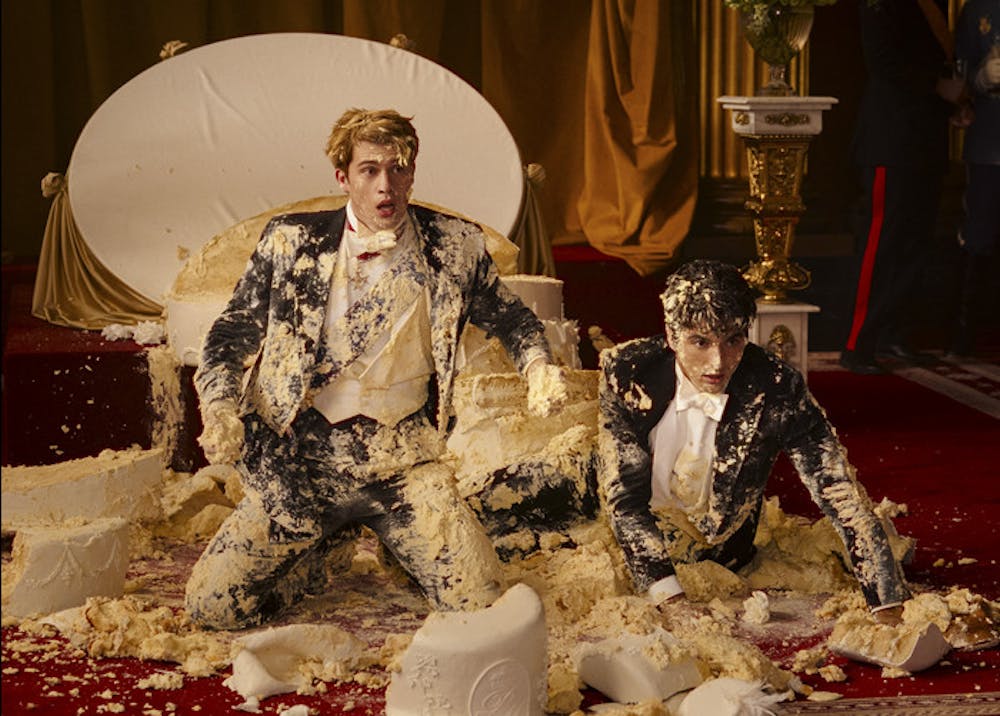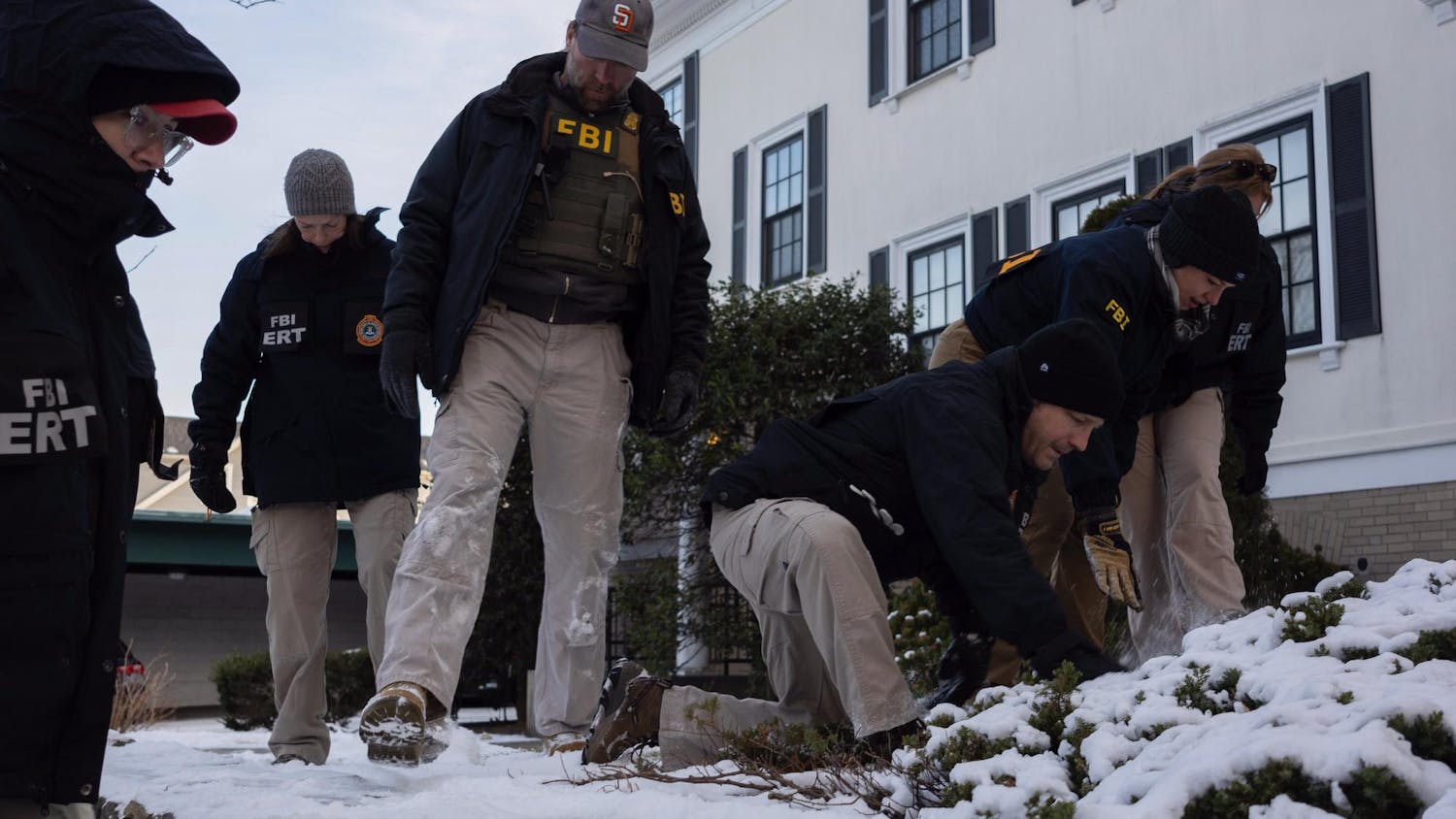While a certain level of uncomfortable cheesiness is expected in romantic comedies, there is such a thing as crossing the line. Audiences can only be subjected to so many overbearing love songs and cliche pick-up lines, even when a film centers around a budding relationship. “Red, White & Royal Blue” spends most of its runtime in this more intolerable realm of romance. In a little under two hours, the film manages to travel so far past the line that it leaves any semblance of reality far in the distance.
The premise of “Red, White & Royal Blue” is immediately absurd. Based on the novel by Casey McQuiston, the film follows a romance between Alex Claremont-Diaz (Taylor Zakhar Perez), the first son of the United States, and Prince Henry (Nicholas Galitzine), second in line to the English throne. At the beginning of the movie, the young political figures hate one another: Alex is about as confidently American as one can get and Henry largely comes across as an insufferable snob. Their dislike, of course, turns out to be the result of a misunderstanding and soon begins to dissipate. In a matter of only a few months, Alex and Henry begin to flirt, see each other in secret and inevitably fall in love.
To their credit, Zakhar Perez and Galitzine have incredible chemistry together. Even at the beginning of the movie, when the two are still only pretending to like each other to maintain their public images, it's hard not to note the chemistry jumping off of the screen. The characters become even more likable as each grapples with how to exist outside of the heteronormative expectations imposed upon them. They wish for acceptance — from both each other and their respective countries — and the struggle is at times heartbreaking.
Unfortunately, the low-quality acting makes any humorless scene in the film difficult to watch. Both Perez and Galitzine are fine in quick moments of comedic relief, but it becomes difficult to take them seriously any time the two attempt to be vulnerable with one another. During a central argument in the film, for instance, the actors’ poor performances end up taking away from what’s actually decent writing. Alex tells Henry that he wants to “figure out a way to love each other on our own terms,” but he does so with such forced sincerity that the line falls flat.
The fact that the film’s settings are at times clearly fake only contributes to its detached sense of reality. A computer-generated Washington Monument and the backdrop to Alex’s first kiss with Henry — an incredibly simulated-looking tree — are among the more painful of these backdrops. There additionally appears to be a gap between the movie’s understanding of American politics and how politics actually function today. Alex’s view of the U.S. government is overly optimistic; he’s the pinnacle of a young, idealistic kid who really just wants to help people. He paints his own queerness as consistent with the ideal of American liberty and finds that the public immediately accepts him for who he is. Admittedly, it’s hard not to grow frustrated with such a one-sided depiction of queerness in America that ignores the unjust treatment that LGBTQ+ community members actually face.
As a result of its considerable distance from reality, any level of tension in “Red, White & Royal Blue” remains relatively low. Both Alex and Henry’s deepest fears — that their parents, grandparents and countries will object to their relationship — never really come to fruition, which turns the ending into a classic happily-ever-after. Given the cliche trajectory of the film, such perfect last few scenes come as no surprise. To its credit, “Red, White & Royal Blue” is at least consistent, remaining absurdly idealistic up until its very last minute.

Rya is an Arts & Culture editor from Albany, NY. She is a senior studying English and Literary Arts, and her favorite TV show is Breaking Bad.





